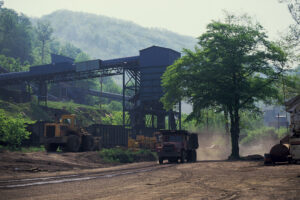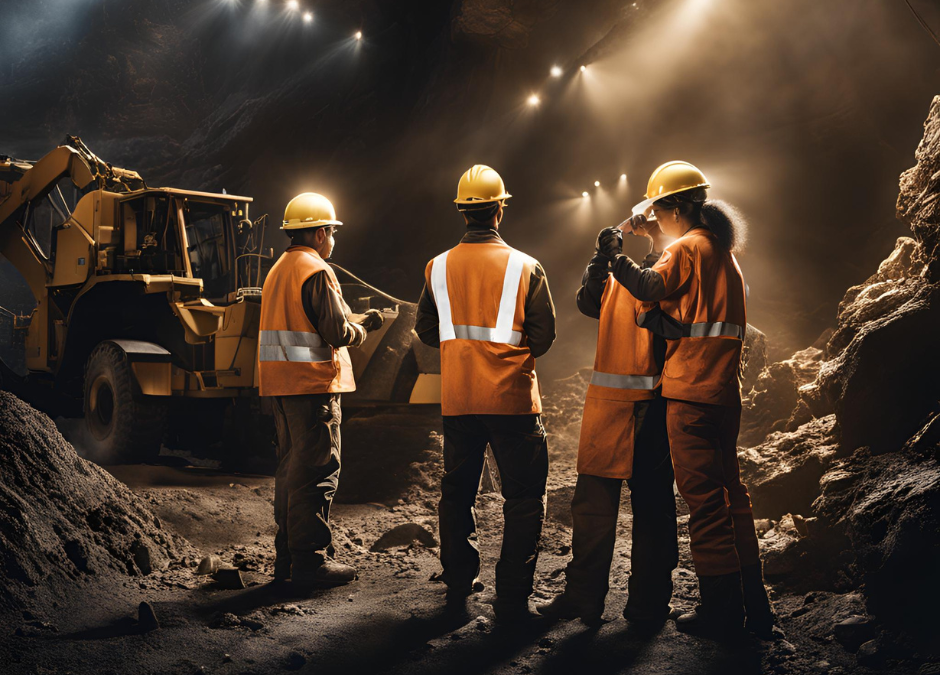The mining industry, traditionally male-dominated, has long faced issues related to gender bias. Although progress is being made, gender bias in the mining industry continues to manifest in various ways, from recruitment practices to career advancement opportunities. In this article, we will explore how gender bias affects women in the mining industry, examine the barriers they face, and discuss what can be done to create a more inclusive and equitable work environment for everyone.
How Does Gender Bias Manifest in Recruitment and Hiring Practices in Mining?
One of the most prevalent ways gender bias in the mining industry manifests is during recruitment and hiring. Women often face challenges when applying for mining jobs due to ingrained societal perceptions of certain jobs being “men’s work.” For example, roles such as heavy machinery operators, drillers, and underground miners are often advertised as male-oriented positions, which can deter women from applying.
Studies have shown that even when women apply for these positions, their qualifications may be undervalued or overlooked. In some cases, unconscious bias influences hiring decisions, with employers prioritizing male candidates over equally qualified female candidates. This creates a significant disparity in the gender balance in the industry, leading to a lack of representation and opportunities for women.
What are the Main Barriers Women Face When Entering the Mining Industry?
Women entering the mining industry face several challenges, both externally and internally. Barriers to entry include lack of support networks, inadequate facilities, and gender-based discrimination. Many women also face resistance from male colleagues who may not be accustomed to working with women in physically demanding roles.
The lack of mentorship or role models within the industry further compounds these challenges. The mining industry’s stereotypical masculine image can make it difficult for women to feel like they belong. Women entering the workforce often have to prove themselves repeatedly, and they may face dismissive attitudes or even harassment from male counterparts. This can lead to high turnover rates and lower retention rates for women in the industry.
How Do Societal Norms and Expectations Influence Gender Roles Within the Mining Industry?
Societal norms and expectations play a significant role in shaping gender roles within the mining industry. Mining, like many other heavy industries, has historically been seen as a “man’s world.” The image of mining as a physically demanding, dangerous occupation has led to the assumption that only men are capable of performing these tasks.
This perception is deeply ingrained in many cultures, leading to gender bias in hiring, promotions, and daily operations. Societal pressure on women to conform to traditional gender roles can also discourage them from pursuing careers in mining. For example, women may be discouraged by family members or society from working in environments perceived as unsafe or inappropriate for women, further perpetuating the gender imbalance.
What Role Does Company Culture Play in Perpetuating Gender Bias in Mining?
Company culture is another key factor in perpetuating gender bias within the mining industry. In environments where male-dominated attitudes are the norm, women may struggle to find acceptance or recognition. If a company has a culture that is not actively inclusive, gender bias can go unchecked, leading to an environment where women feel isolated and unsupported.
For example, a workplace culture that celebrates after-hours drinking or masculine camaraderie can inadvertently exclude women. This can make it harder for female workers to network, connect with peers, or feel comfortable sharing ideas and concerns. Furthermore, if senior leadership in mining companies does not prioritize diversity and inclusion, it can lead to the perpetuation of bias, as unconscious bias often filters down from top management.
How Does Gender Bias Affect Career Advancement Opportunities for Women in Mining?
Gender bias significantly impacts women’s career advancement in the mining industry. Even when women are hired, they may face challenges when it comes to climbing the career ladder. They are less likely to be considered for promotions or leadership roles, even when they demonstrate the necessary skills and experience.
In many cases, men are favored for leadership positions simply because they are perceived as more competent or suited for management, often due to ingrained biases. Additionally, women may find themselves relegated to roles that are considered “supportive” or “secondary” in nature, which limits their opportunities to take on larger, more impactful responsibilities.
How Does Gender Bias Impact Workplace Safety and Health for Female Miners?
In the mining industry, workplace safety and health are of paramount concern, and gender bias can have a negative impact on female workers’ ability to stay safe. Women often face challenges related to the provision of appropriate personal protective equipment (PPE). Safety gear, such as helmets, gloves, and work uniforms, are often designed with male body types in mind, making it difficult for women to find gear that fits properly, which can compromise their safety.
What are the Long-Term Implications of Gender Bias in Mining for the Industry as a Whole?
Gender bias in the mining industry has long-term implications not only for women but also for the industry as a whole. By excluding a significant portion of the population, mining companies are missing out on the diverse perspectives, skills, and innovation that women can bring to the workplace. This leads to a lack of diversity in decision-making and problem-solving, which could hinder progress in technological advancements or operational efficiency.
How Do Pay Disparities Between Male and Female Workers in Mining Reflect Broader Issues of Gender Bias?
One of the most visible forms of gender bias in the mining industry is the pay disparity between male and female workers. Despite performing similar roles and duties, women often receive lower compensation than their male counterparts. This disparity reflects broader issues of gender inequality in the workplace and perpetuates the notion that women’s work is worth less than men’s.
Pay disparities are particularly pronounced in managerial and executive roles, where women may face challenges in breaking through the glass ceiling. Equal pay for equal work should be a fundamental principle, yet gender bias often undermines this concept, creating an unfair working environment for women.
What Initiatives or Programs Have Been Implemented to Promote Gender Diversity in the Mining Sector?
In recent years, several initiatives and programs have been launched to address gender bias in the mining industry. These include mentorship programs, diversity quotas, and initiatives aimed at creating inclusive hiring practices.
For example, organizations like Women in Mining (WIM) work to create networks and communities for women in the mining sector, providing professional development, mentorship, and advocacy. Some mining companies have also introduced gender diversity targets, aiming to increase the number of women in leadership roles and technical positions.
What Role do Industry Associations and Regulatory Bodies Play in Combating Gender Bias?
Industry associations and regulatory bodies play a critical role in combating gender bias in mining. These organizations can create and enforce policies that require companies to meet certain diversity standards. They also have the power to influence change at a broader level, advocating for gender equity and providing guidelines to promote a fair working environment.

For example, organizations like the International Council on Mining and Metals (ICMM) advocate for gender equality in the workplace and support members in implementing better diversity practices. By setting standards and holding companies accountable, these organizations can drive meaningful change within the mining industry.
How Can Mentorship and Networking Opportunities Help Reduce Gender Bias in Mining?
Mentorship and networking opportunities are critical for reducing gender bias in the mining industry. By connecting women with experienced mentors, they can receive guidance, advice, and career support that helps them navigate the challenges they face. These programs also provide a space for women to network with their peers and colleagues, fostering a sense of community and belonging.
Mentorship helps women break through professional barriers and provides them with the confidence to pursue leadership roles within the mining sector. In turn, these opportunities lead to greater representation of women in senior roles, which helps challenge the gender bias that has historically hindered women’s career advancement in mining.
What Can be Done to Better Support Women Returning to the Workforce in Mining After Maternity Leave?
Supporting women who return to the workforce after maternity leave is a critical aspect of promoting gender diversity in the mining industry. Policies such as flexible work hours, and parental leave support can help ease the transition back to work. Mining companies that offer these benefits demonstrate a commitment to fostering an inclusive and supportive environment for women.
Moreover, providing opportunities for part-time or flexible roles within the mining industry can help women who are returning to work balance their family and career responsibilities, ensuring they do not have to choose between their professional and personal lives.

